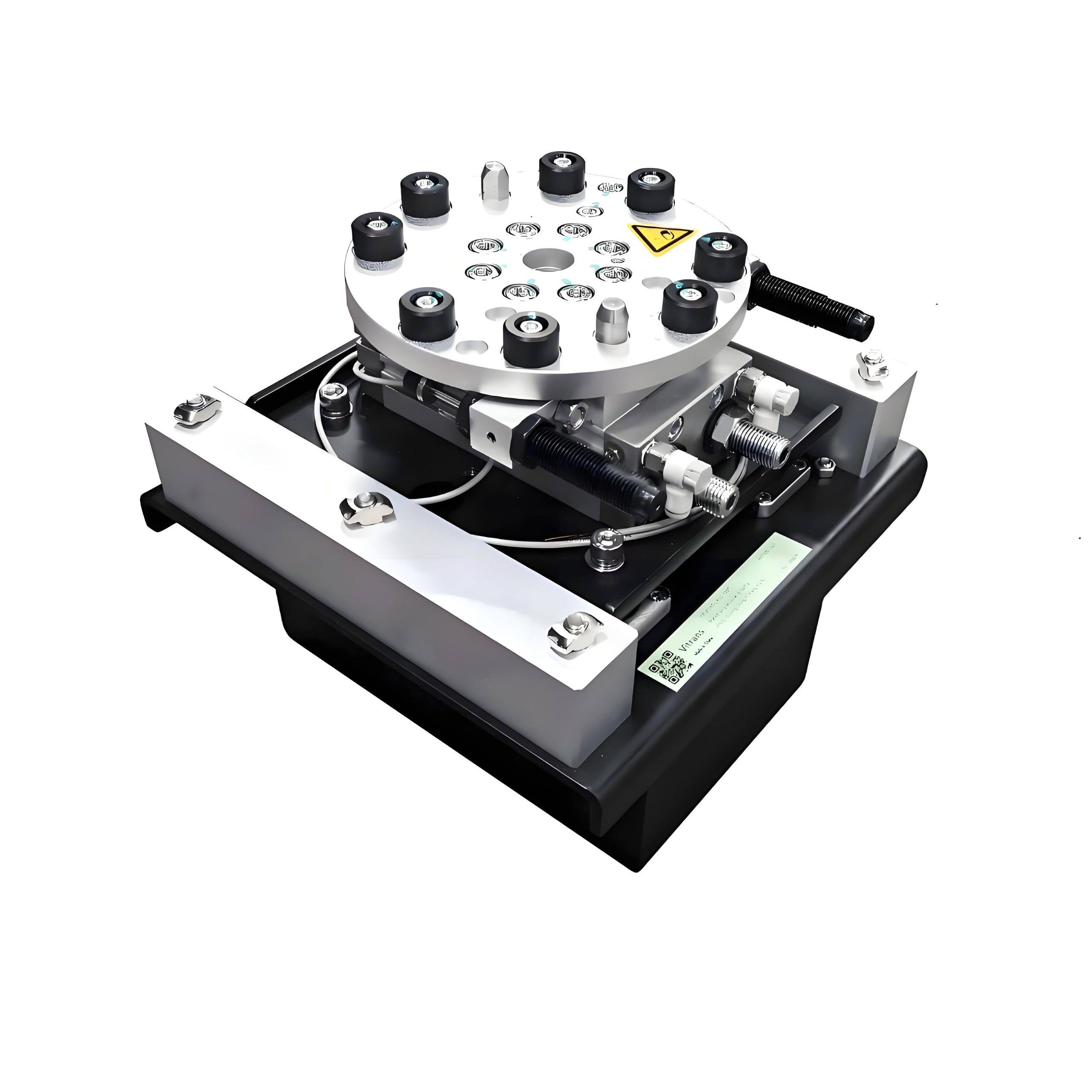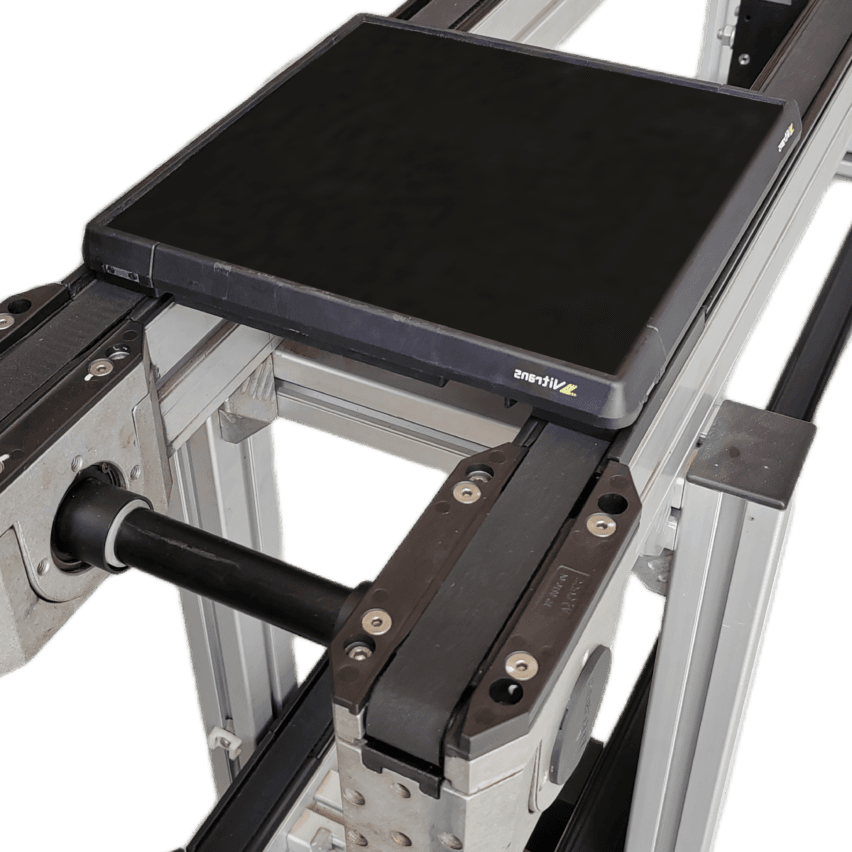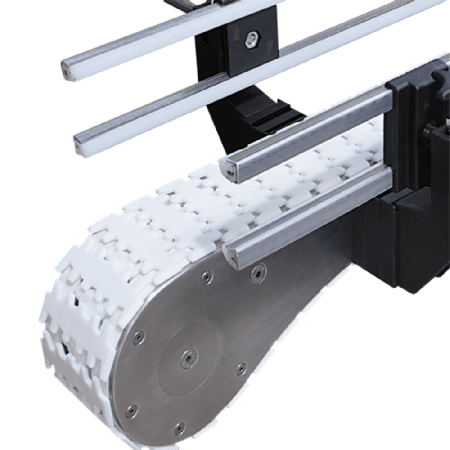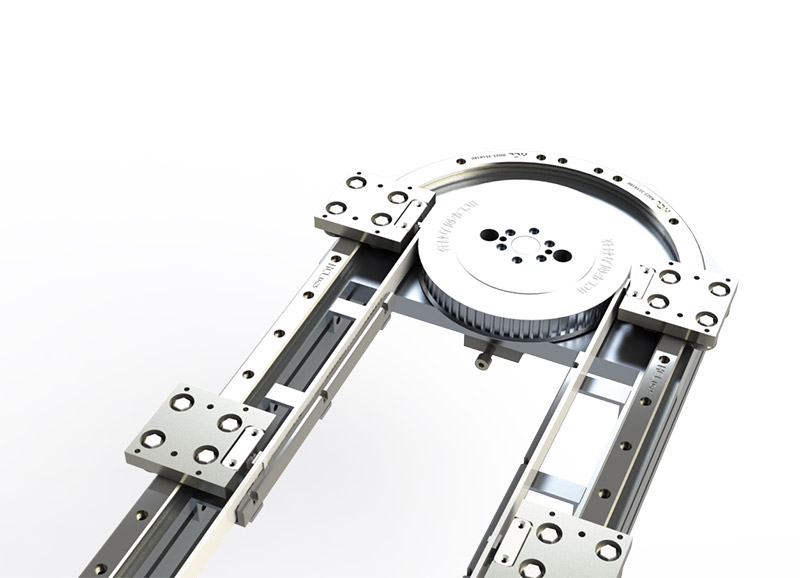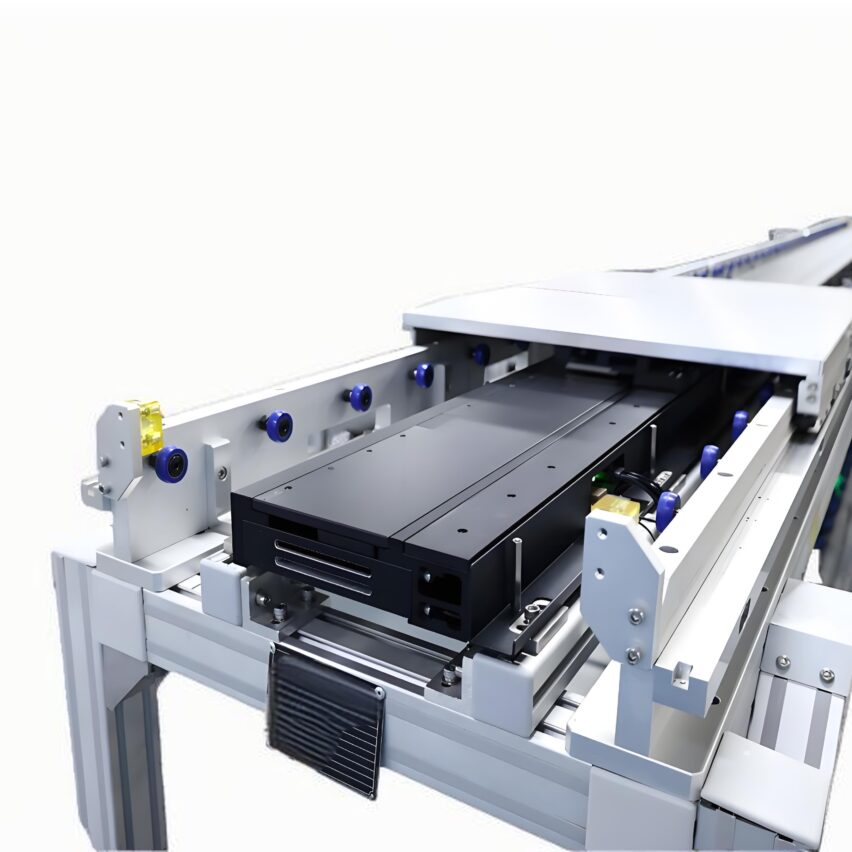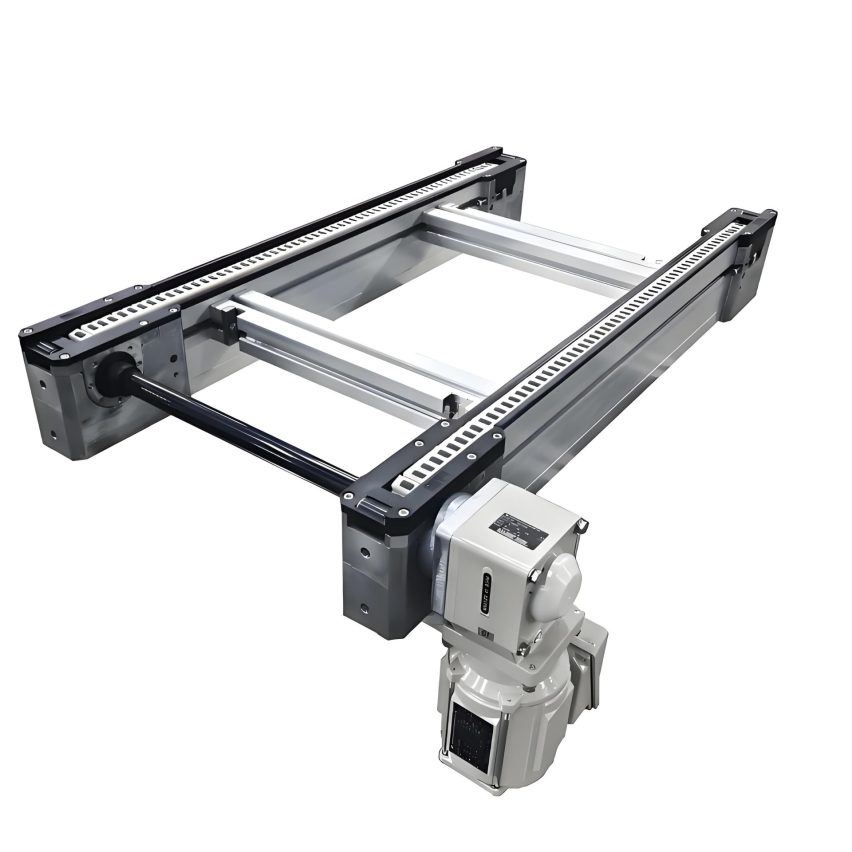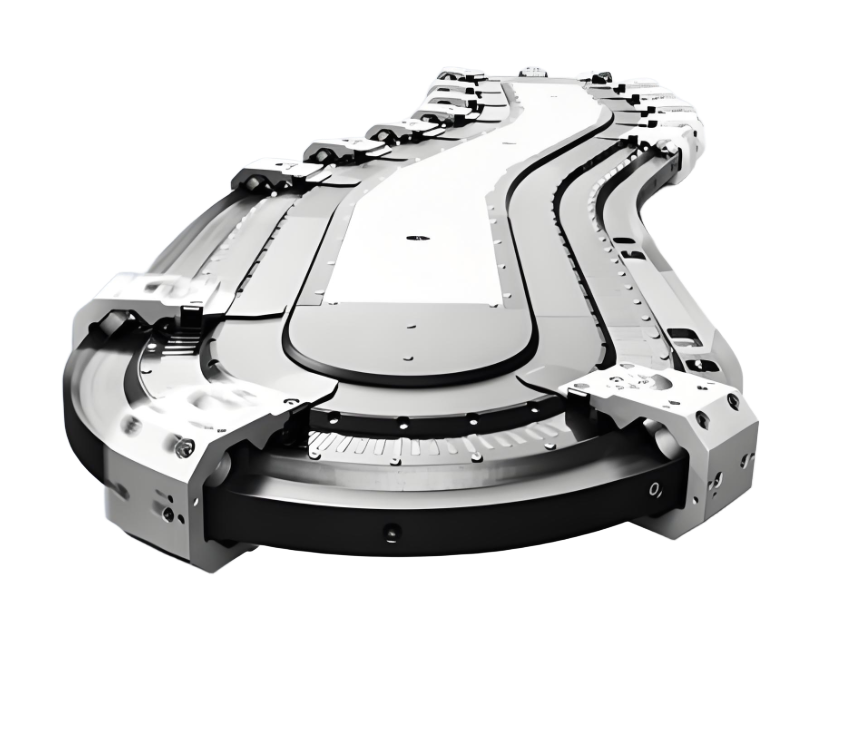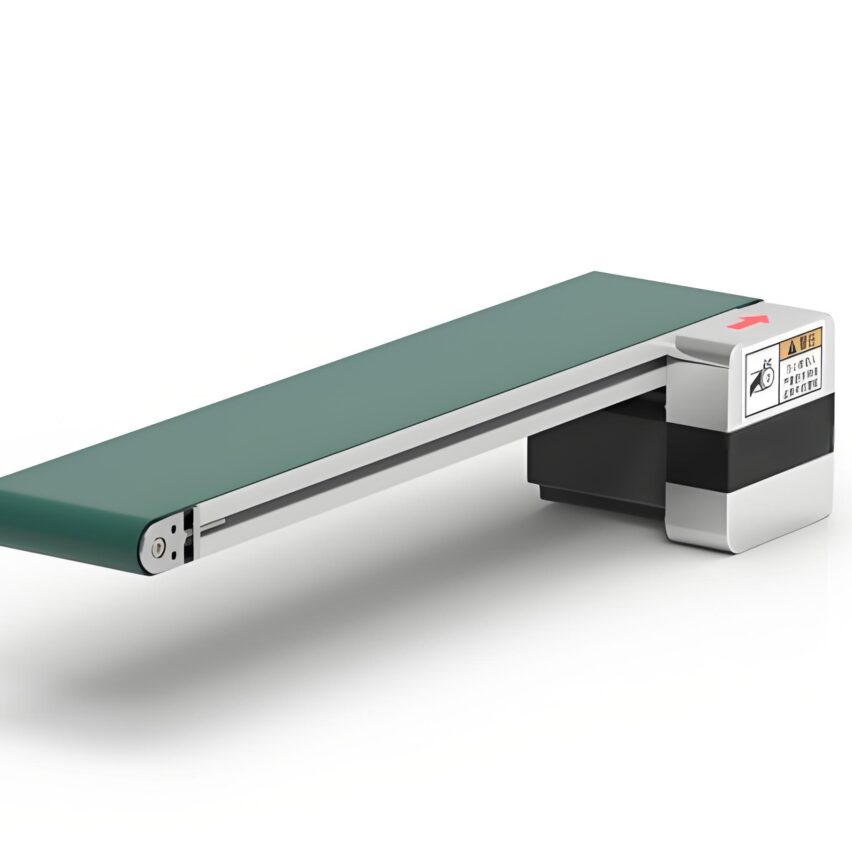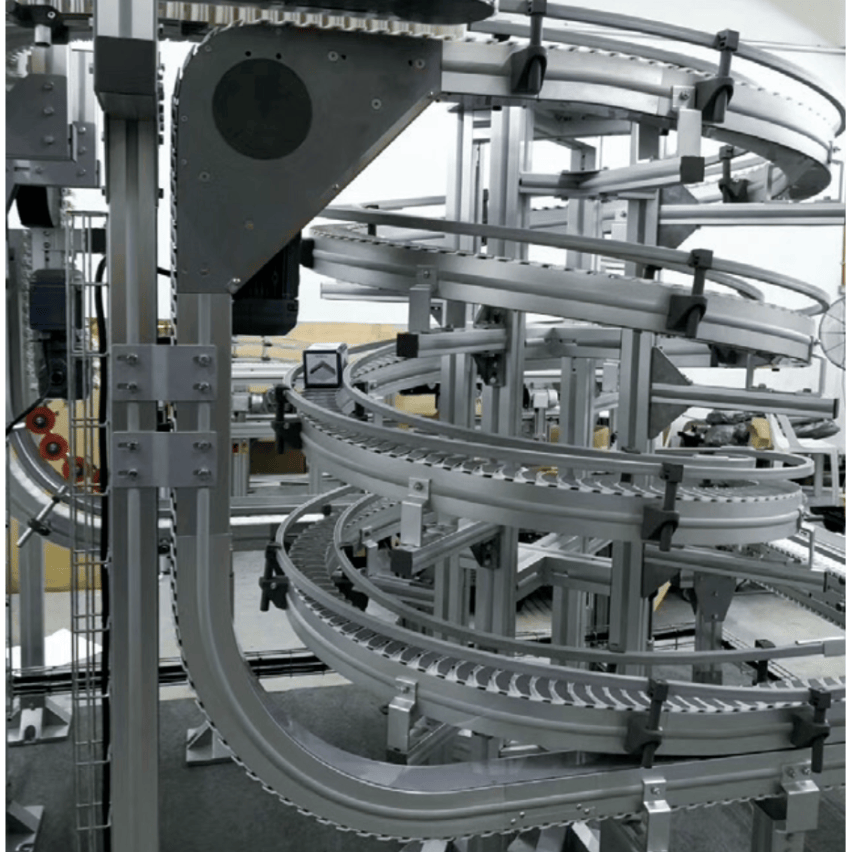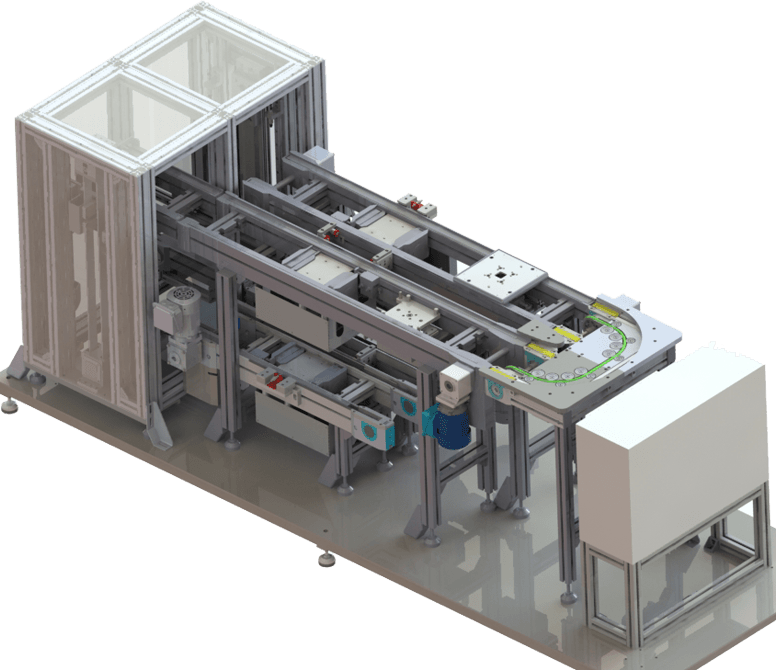Description
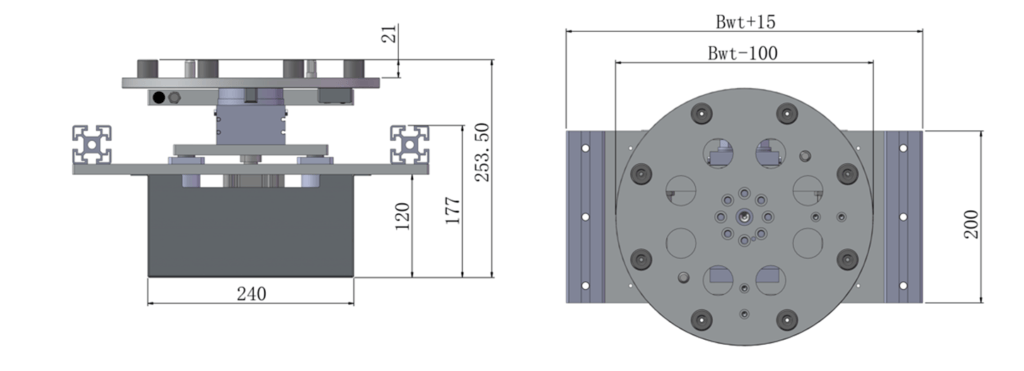
Jacking Rotation.
- Supported pallet width /mm. 160, 240, 320, 400, 480, 640 (160≤Bwt≤640)
- Supported pallet length /mm. 160, 240, 320, 400, 480, 640 (160≤Bwt≤640)
- Support Angle. 90° or 180°
- Driving method :cylinder (engine)
- Maximum load /kg. 30 or customised

Key Benefits
- Increased precision and flexibility: the jacking swivel is a pioneering mechanism that perfectly combines the functions of a lateral and a swivelling device in a single multifunctional unit. The orientation of the pallet can be dynamically adjusted to ensure a smooth, uninterrupted flow.
- More functionality: The function of the jacking swivel is similar to that of a turning device, but it goes one step further by integrating lateral and swivelling functions. This dual functionality not only enhances the adaptability of the conveying system, but also opens up new possibilities for efficient material handling in a variety of production scenarios.
- Accuracy and synchronisation: the jacking and rotating uses a timing belt as the transport medium and is driven by a stepper motor. The lifting and rotating movements of the unit are coordinated by a lifting cylinder and a rotating cylinder respectively, adding an extra layer of control and customisation to the conveying process.
- Maximising space utilisation: Widely used in pallet conveyor systems, the jacking swivel has become a common and important component. It not only addresses the limitations of lateral units, but also provides a space-saving solution to the space challenges posed by curved units.
mileage
Seamless integration of landscape and rotary functions.
Mitigate the challenges posed by pallet forward movement.
Efficient use of space compared to conventional curved units.
Precision synchronised drive using timing belts.
Drive via stepper motors, lift cylinders and rotary cylinders.
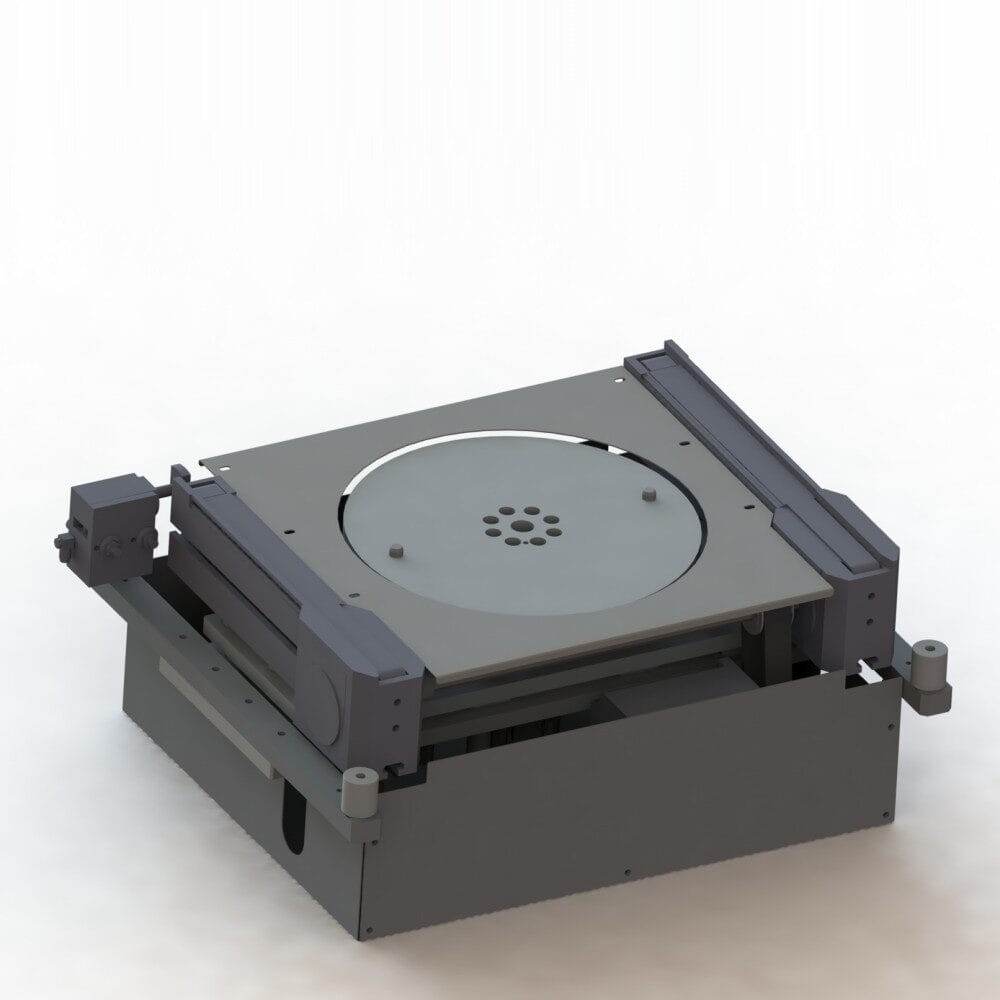
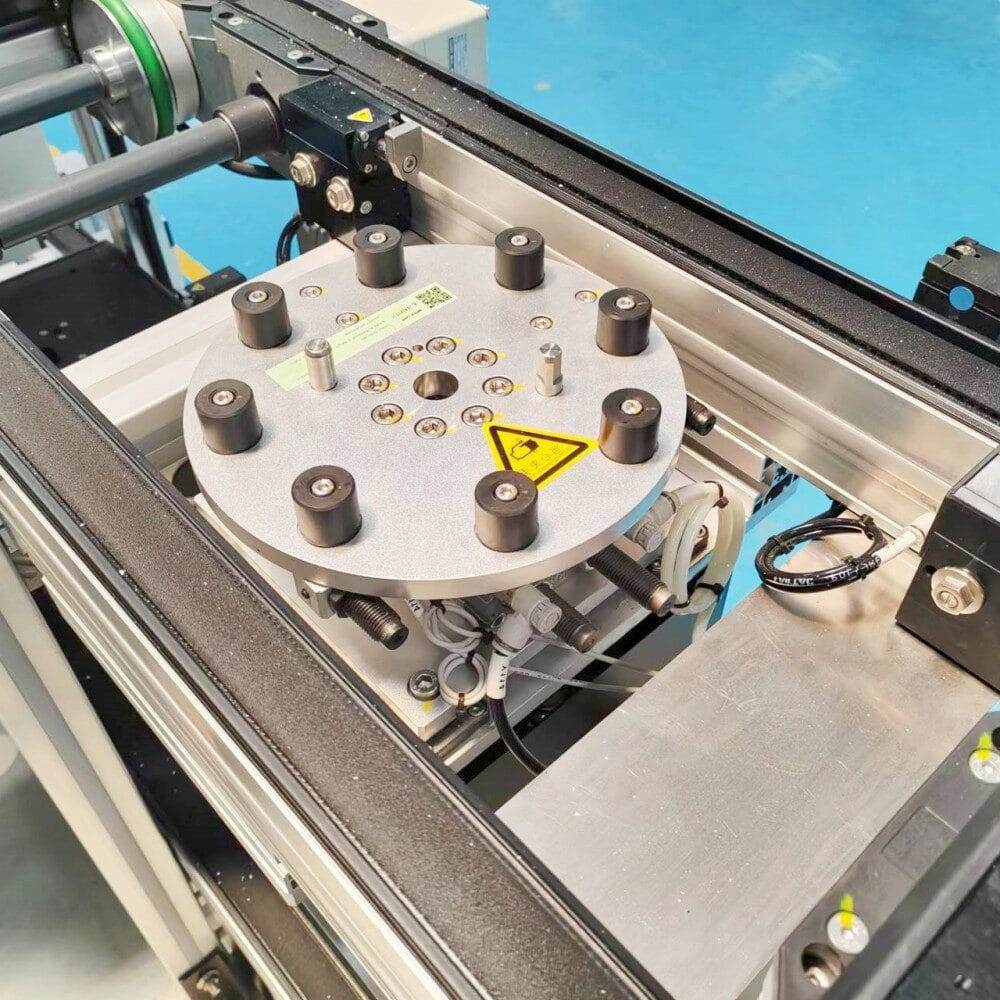
More efficient solutions
As production processes continue to demand greater precision, adaptability and spatial efficiency, the jacking rotary stands out as a reliable, innovative solution. It seamlessly integrates lateral and rotary functions, marking a significant advance in the quest for more efficient and versatile conveyor systems.


